#jean de dunois
Photo
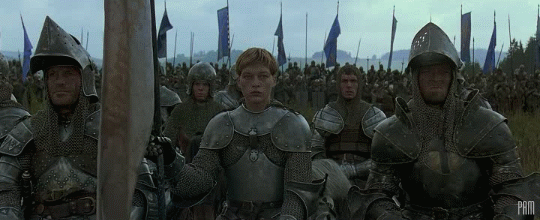

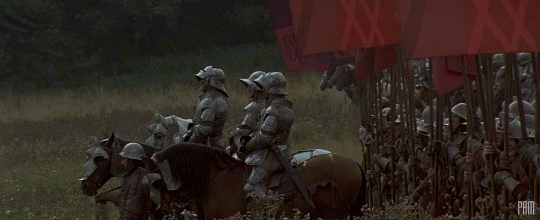
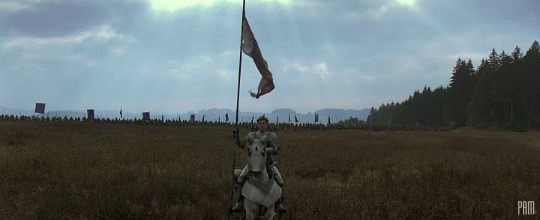
The Messenger: The Story Of Joan Of Arc (1999)
#1999#gif#film#movie#history#The Messenger#The Story Of Joan Of Arc#Luc Besson#Tcheky Karyo#Jean de Dunois#Jean d'Orleans#Milla Jovovich#Joan Of Arc#Jeanne d'Arc#Vincent Cassel#Gilles de Rais#Andrew Birkin#John Talbot#Vincent Regan#Buck#Hundred Years' War#Orleans#France#England#knights
37 notes
·
View notes
Text

Jean d'Orléans, Comte de Dunois.
#royaume de france#maison de valois#jean d'orléans#comte de dunois#bâtard d'Orléans#county de dunois#full length portrait#valois orléans#full-length portrait#hundred years' war#la guerre de cent ans
5 notes
·
View notes
Text
Intercommunal Free Dance Music Orchestra - L’Inter Communal and Le Musichien, Souffle Continu Records reissues of albums from 1978 and 1983
The Intercommunal Free Dance Music Orchestra was created in 1971 by an “old hand” of French free jazz, François Tusques. Free Jazz, was also the name of the recording made by the pianist and other like-minded Frenchmen (Michel Portal, François Jeanneau, Bernard Vitet, Beb Guérin and Charles Saudrais) in 1965. But, six years later Tusques had had his fill of free jazz.
After having wondered, together with Barney Wilen (Le Nouveau Jazz) or even solo (Piano Dazibao and Dazibao N°2), if free jazz wasn’t a bit of a dead end, Tusques formed the Inter Communal, an association under the banner of which the different communities of the country would come together and compose, quite simply. If at first the structure was made up of professional musicians from the jazz scene it would rapidly seek out talent in the lively world of the MPF (Musique Populaire Française).{French Popular Music, ndlt}
Compiled of extracts from concerts given between 1976 and 1978, L’Inter Communal is not the first album from the Intercommunal Free Dance Music Orchestra. But it is the one which shows with the most exuberance the “social function” which inhabited free jazz and popular music at the time. All the more so as, to head up the project, the group (made up of wind instruments: Michel Marre, Jo Maka, Adolf Winkler and Jean Méreu) called upon Spanish singer Carlos Andreu. Andreu, claimed Tusques, was a griot “who created of new genre of popular song improvised with our music, based on events going on at the time”.
As with L’Inter Communal a few years earlier, Le Musichien follows on from the group of varying musicians that Tusques had conceived as a “people’s jazz workshop”. In 1981, at the then famous Paris address, 28 rue Dunois, the pianist sang with his partner Carlos Andreu an “afro-Catalan tale”. Over a slow bass line (exceptional work from Jean-Jacques Avenel) backed by percussion from Kilikus, saxophones (Sylvain Kassap and Yebga Likoba) and trombone (Ramadolf) which presented a myriad of constellations. The sky has no limits, let’s make the most of it.
The following year, at the ‘Tombées de la Nuit’ festival in Rennes, bassist Tanguy Le Doré would weave with Tusques the fabric on which would evolve an explosive “brotherhood of breath”: Bernard Vitet on trumpet, Danièle Dumas and Sylvain Kassap on saxophones, Jean-Louis Le Vallegant and Philippe Le Strat on… bombards. With hints of modal jazz inspired by Coltrane or Pharoah Sanders, the Intercommunal Free Dance Music Orchestra is an ecumenical project which speaks to the whole world.
#Bandcamp#Intercommunal Free Dance Music Orchestra#france#70s#80s#jazz#spiritual jazz#reissue#Souffle Continu Records
8 notes
·
View notes
Photo



April miniatures (1455) taken from the Book of Hours of Simon de Varie by Master of Jean Rolin II (fl. from 1440 until 1465), Dunois Master (fl. from 1435 until 1466).
The first miniature shows a lady holding a wreath of flowers and the second, Taurus.
Koninklijke Bibliotheek. Wikimedia.
56 notes
·
View notes
Text

February 12th 1429 saw the Battle of thee Herrings, also called the Battle of Rouvray
A follow up tolast Thursday's post.....
Yes it sounds like a sea battle possibly between our Icelandic neighbours in the North Atlantic, but the Battle of the Herrings was in fact a real battle, fought in France during the 100 years wars, this is a follow up my post last week where the Stewart Brothers helped relieve the siege of Orleans with a large contingent of Scots.
Commanded by Sir John Fastolf, a convoy of as many as 300 wagons was carrying supplies for the English besiegers of Orleans when it was attacked near the town of Rouvray by the French and their Scottish allies.
Deploying his wagons as an improvised fortification, Fastolf fought off the enemy and eventually drove them from the field. The battle owes its unusual name to the fact that the supplies being carried by the convoy included not just cannonballs, arrows and crossbow bolts but also a large number of barrels of herrings – particularly important as Lent was approaching, a time when the soldiers would have been forbidden from eating meat.
Over eager to set to the Auld Enemty, the 400-strong Scottish infantry, contrary to the orders of the Count of Clermont went on the attack against the English formation. This,forced the premature ending of the artillery bombardment for fear of striking their own forces. The Scots were not well protected by armour and great damage was inflicted on them by the English archers and crossbowmen who were shooting from behind the protection of their wagon fort.
At this point, the English, seeing that the remaining French forces were slow to join the Scots in the attack decided to go on a counterattack. They struck the rear and flanks of the disorganised French/Scottish forces and put them to flight. According to contemporary accounts the French/Scots army lost about 400 men including Sir John Stewart. Among the wounded was Jean de Dunois, known also as the Bastard of Orléans, who barely escaped with his life and who would later play such a crucial role, along with Joan of Arc, in the lifting of the siege of Orléans and the French Loire campaign which followed.
Some sources give the 13th as the date of the battle.
7 notes
·
View notes
Text
In honor of Foundations turning one today, I'd like to take everyone on a walkthrough on all the religious symbolism, as well as double meaning behind it.
Spoiler warning: a lot of it can be traced back to Saint Jehanne d'Arc.

Obviously, the entire song wasn't about her, but knowing Gerard and his love for her, it's not too surprising that some of the lyrics match up with St. Joan's story.
So, let's talk about it!
"See the man who stands upon the hill; he dreams of all the battles won. But fate had left its scars upon his face with all the damage they had done."
(I'd like to re-emphasize that while I agree with the more discussed meaning -- you can't wallow in the past forever, no matter how traumatic, as it'll only hurt you more in the end-- I'm looking at the song through a strictly religious lense; and one that focuses on St. Jeanne, specifically.)
Jehanne had witnessed her country be at war with England since she was little.
She was well aware of it, and had even witnessed an Burgundian attack on their village of Domrémy when she was around the age of sixteen.
All through that, she waited for a miracle to save France; but the miracle was her.
The last lyric could also be about her fate as military general, leaving literal scars on her from what the English (and English supporters in France, who I will be grouping with the English for the rest of this essay), had done to her; specifically, shooting her with arrows on two seperate occasions.
"And so, tired with age, he turns the page, let the flesh submit itself to gravity."
"Let our bodies lay; mark our hearts with shame; let our blood in vain; you find God in pain."
Jehanne had her first vision at the age of thirteen, and only began understanding what it meant at the age of sixteen, shortly after Burgundian troops ran amuck; where she fully allowed herself to become one with what the Lord had told her to do by heading to Vaucouleurs -- where her Aunt and Uncle lived -- to convince Sir Robert de Baudricourt to allow her to meet "Gentle Dauphin" (her own nickname for the then-king) Charles, so she may begin her military campaign in Orléans.
She, unfortunately, was turned away for nearly a year before her newfound friends were able to convince him to let her go.
And so, she went to Chinon, performing her first miracle by identifying the Dauphin in disguise within a crowd; Dauphin Charles, soon to be King Charles VII, granted her to go to Orléans where she soon joined generals: La Hire, Gilles de Rais, and Jean de Dunois in the city.
Jeahnne, along with most of her army, believed in God and the Bible; but they are still in the military.
They had to kill others if it meant surviving.
The soldiers are begging God to let them get into heaven, even if it's just in vain. Being pitied by God is a much better fate than an eternity in hell.
The last part though, isn't really about the army, but could still work: those who died on the battlefield die in pain, and then meet God shortly after, as He took their plea for forgiveness, and allowed them into heaven.
However, I like to see it as involving Jehanne.(There will be a lot of references to her death within this post btw.)
Jehanne d'Arc was burned at the stake at the age of nineteen for witchcraft, heresy, and so much more.
Her last (audible) words were in the form of a prayer, calling out for Jesus Christ. In the face of death, and admist her pain, she had "found" the both of them in the end.
"Now, if your convictions were a passing phase, may your ashes feed the river in the morning rays. And as the vermin crawls, we lay in the foundations of decay."
Jehanne wasn't considered a witch for very long, only a few years after her death was she called a martyr by the Catholic church.
The convictions she faced in court were a literal passing phase.
Not only that, but she was burned at the stake; her body turning into ash after three times, which the English disposed of by throwing her remains in the Seine river.
The people who murdered her were still alive, acting as though they didn't kill an innocent teenager for nothing.
Jehanne's family, on the other hand, were too focused on her death to continue the fight like she would've wanted.
Her brothers, Pierre and Jean, even went as far as latching onto a woman who claimed to be Joan, even though the real Joan was long dead by then.
"He was there the day the towers fell, and so he wandered down the road. And we would all build towers of our own, only to watch the roots corrode."
Throughout her travels as an army general, she became close with King Charles VII, who even ennobled her, and her family.
Her main goal was to protect him, and escort him to safety so he could be crowned the new king of France.
Her single motive was to protect her country, and yet, it was her country who betrayed her in the end.
Once she was captured, the Duke of Burgundy sold her to the English, where she was put on trial and ultimately killed.
Charles VII did nothing to help her in the end either, as he wanted to make amends with England, so Jehanne was alone fending for herself where she was assaulted and subjected to mental (and near physical) torture.
"But it's much too late, you're in the race. So we'll press and press 'til you can't take it anymore."
But even then, Jehanne was persistent. She attempted to escape the prison multiple times – once by jumping out of her 21-foot tall tower and living – but ultimately failed. (Which was something that was used against her faith in court.)
She was also supposed to be guarded by women of the church, but instead was "guarded" by Englishmen; who allowed a well-respected English Lord to sexually assault her. She fought back, and he eventually left before it could escalate.
Jehanne was always more comfortable around women; when given the chance, she'd prefer sleeping next to women than men-- but she did have few men she was comfortable around.
Even after she had initially signed a paper saying she was to not discuss her visions or crossdress while living out the rest of her life in prison, the men who held her trial were quickly called to come back to the prison, where they found her dressed in men's clothing once again; so she was put to death.
She did say that she would've gladly worn dresses if it meant she could attend mass (which she hadn't been able to see), but the fact she was forced into a prison with only men more than likely had something else to do with it.
"Let our bodies lay; mark our hearts with shame; let our blood in vain; you find God in pain."
[See previous]
"And if, by his own hand, his spirit flies, take his body as a relic to be canonized. Now, and so he gets to die a saint but she will always be a whore."
(i adore this part btw it's THE best my chem lyric idc!!)
This one is more metaphorical. Because obviously, the only one in that courtroom to be canonized was Jehanne, meanwhile, no one even knows her murderers names; unless you're super into the case of Jehanne d'Arc.
But at the time, the English and French kings were seen as heroes; in their lifetimes, for the most part, they were seen as the good guys, while Jehanne was seen as a heretic.
"Against faith! (Cage all the animals!)"
Many of her murderers claimed to care about her, and they just wanted the best for her, ehen in reality, the English caged her and her brothers in seperate cells, who they deemed to be a danger.
By imprisioning, and ignoring everything Jehanne said about her visions, the church was going against their own faith in God.
"Against all life! ('Cause the message must be pure!)"
The English and the Church putting her to death is one of the huge things that God should be against; killing people. Obviously. (It's kinda funny imo that whenever someone murdered someone in the Bible their punishment was...also.. to be murdered? But oh well.)
Especially those who have a direct order from Him to fulfill a task; anyone who gets in the way of that task will not have a pretty fate.
The only reason why so many people went along with her execution was because they marketed it as being a good deed– "it's okay if we do this because we won't have to worry about losing this war anymore."
"Against change! (You can wander through the ruins!)"
One of the main reasons Jehanne was killed was because she wore mens clothing, which goes against the Bible.
However, the church failed to mention that the Bible states crossdressing is okay, under certain circumstances; which Jehanne fell into.
She was still murdered for her religious beliefs, and for her ideals in general, but the main reason was because she wore armor in order to protect herself from battle, as well as from the men she was leading.
"We are plagued! (But the poison is the cure!"
Jehanne d'Arc was both the poison and the cure.
The poison against the English, as her persistance was something that both sides hadn't seen throughout the entire war.
And she was the cure for the French for the same reason.
The plague, on the other hand, was the war itself.
Any form of plague is known to last for a long amount of time, sometimes, without having a way to fight it for even longer.
This is the same case here.
It took ninety-two years for Jehanne to, basically, pick France up from its bootstraps and start to cause serious damage to the English.
"You must fix your heart."
As stated previously, Jehanne wasn't supposed to be put to death originally.
She had signed a paper that said she would not continue to speak about the voices she heard, and she would go to prison for the rest of her life.
That was considered a moment of weakness for Jehanne, as only a few days later, she was back in her armor and stated she had another vision from the same saints as before.
I see this as St. Catherine of Alexandria, St. Margaret of Antioch, and St. Michael The Archangel during that time telling her that it'll be okay as long as she still has full faith in the Lord; which she did.
Those Saints were there to guide her, which also meant being herself and doing the thing everyone hated her for.
"And you must build an altar where it swells."
As she waited for news about what was to come, Jehanne still prayed, and found ways to worship God despite her situation.
As tensions only continued to rise, she never lost her faith.
"When the storm it gains, and the sky it rains, let it flood, let it flood; let it wash away."
Again, I see this at those Saints during that vision telling her to allow that fear to take over for a short period of time, as it will help her become stronger in the end.
"And as we stumble through your last crusade, will you welcome your extincion in the morning rays?"
"And as the swarm it calls we lay in the foundations–"
Jehanne's last battle was getting to that stake.
With a mirtire listing off her convictions, she was lead and tied to the wooden stake in the middle of Rouen, where Bishop Pierre Cauchon began his homily. She was fairly calm up until her address, where she broke down.
She knew that soon, she would meet those who guided her through her journey, and she welcomed everyone with open arms through her fear.
The "swarm" here is Archangel Michael, Catherine of Alexandria, Margaret of Antioch, and God Himself calling out to her as she burned.
They all led her through those battles, and in her death, finally were able to accept her as one of their own.
"Yes, it comforts me much more. Yes, it comforts me much more. To lay in the foundations of decay."
Again, personally, I see this as Jehanne's brothers finding comfort in thinking their sister is still alive, even though they know she isn't.
They were both captured alongside her, and yet, they like living in ignorance instead of facing that harsh reality.
"Get! Up! Coward!"
This time, it isn't any of the Saints Jehanne saw telling her to keep going.
I see it as Jehanne herself telling the people (more than likely, her brothers) she led to get up and continue fighting; they almost won, they were so close.
So, they did.
"I believe firmly what my Voices have told me, that I shall be saved; I believe it as firmly as if I were already there." -Saint Joan Of Arc.
The French continued fighting until Bordeaux surrendered, marking the French victory, which was won only twenty-two years after Jehanne's execution.
Not only that, but her prediction on what would occur seven years after her trial came true: King Charles VII created the Pragmatic Sanction of Bourges, which means that no trial can be held without the authority of the Pope.
Meaning, Jehanne's trial couldn't have been held unless the Pope wanted it to happen. She had requested that the Pope at the time be contacted about her trial, but was denied because of how long it would've taken.
She would've been forty-one at the time the French came out victorious.

#i cried a bit writing this i wont lie#she deserved so much better#i love her so much#(also i apologize if i got anything wrong)#(im still new to St. Joan research lol)#my chemical romance#mcr#my chem#gerard way#frank iero#ray toro#mikey way#joan of arc#saint joan of arc#jeanne d'arc
8 notes
·
View notes
Text
A golden age for aristocratic bastards

[Jean de Dunois, the Bastard of Orleans]
[..] The fifteenth century was the golden age of aristocratic bastards. The very fact that the word bâtard had honourable connotations in old French should alert us to its significance among the nobility but it seems that the late Middle Ages was a particularly favourable period for the illegitimate offspring of nobles for, although they could not inherit apanages or the propres of a family, no stigma attached to the bastard in higher noble circles. A survey of the higher civil and ecclesiastical offices held by bastards between 1345 and 1523 indicates an acceleration of the conquest of such positions in the first half of the fifteenth century and a great concentration in the second half, with 39 such posts held. There are a number of quite clear reasons for all this. Bastards actually bolstered the numbers within a noble family and were used to strengthen its influence either through marriage alliances or by the acquisition of administrative functions. They could be used to protect the influence of the legitimate members of the family without actually threatening their inheritance and, indeed, could be viewed as more trustworthy by their fathers since they posed no direct threat. As love children, they were often viewed as more handsome and personable than their legitimate siblings (the bastard of Dunois is the great case). Thus, as Harsgor reasonably argues, the expansion of their influence represented 'an aggrandisement of the sphere of influence of the nobility in general'. Although Contamine has observed a restriction of bastards' access to higher military commands at the end of the fifteenth century, aristocratic bastards played a significant part in the group of dominant figures, the 'masters of the kingdom', well into the sixteenth. Charles, last count of Armagnac, liberated from prison after the death of Louis XI, left a bastard, Pierre, who had a brilliant career at court under Charles VIII and Louis XII, was invested with the barony of Caussade, and whose legitimised son Georges, cardinal d'Armagnac, in turn became one of the great ecclesiastical statesmen of the sixteenth century. Georges in turn had a bastard daughter to whom La Caussade descended, while he made his nephew his vicar-general.
As far as the royal family itself was concerned, the kings of the fifteenth century tended to recognise only female bastards, using them for careful marriage alliances designed to assemble an affinity around the throne. Other great princely houses produced many more. The family of the Valois dukes of Burgundy produced not less than 68 bastards, many of whom filled important administrative posts and came to be 'a sort of bastardocracy'. Philip the Good alone sired 26 natural children, while there are spectacular cases like Jean II de Cleves with 63 bastards. One further explanation of their rise is the vast increase in military employment offered by the Hundred Years War. Roughly 4 per cent of the commands in the royal armies of the fifteenth century were held by aristocratic bastards.

[Antoine de Bourgogne, the Great Bastard of Burgundy]
While Harsgor argued that it was mainly the higher nobility that used bastards in this way, Charbonnier's study of Auvergne indicates the same pattern existed at the level of the middle and lower lordship. Among families like the Vernines and d'Estaing they were fully accepted and frequently found military employment and wielded their swords in the private feuds of their fathers. Well into the sixteenth century, we find bastards continuing their attachment to the lignage and fighting the feuds of their legitimate brothers. They replaced the earlier phenomenon of the younger sons who served their family but renounced a family of their own; few of them founded their own lignages, contrary to the pattern found among the higher nobility. However, they were mobilised in the service of the lignage, compensating the relative diminution of legitimate offspring, with the advantage of not dismantling the patrimony. However, from the middle of the sixteenth century, although there was no decline in the number of bastards at this level, there are signs that noble bastards were beginning to draw away from simple attachment to the service of their legitimate family and found lignages of their own.
The decline in recognised bastards took place after the first quarter of the sixteenth century, one of the signs being Francis I's reluctance to recognise illegitimate offspring. The Italian wars possibly provided less employment than the internal wars of the fifteenth century, but it seems just as likely that the main reason was the demographic expansion of the legitimate nobility and the squeeze on offices available for them generally. Added to that, both the Protestant and Catholic reforms took a dim view of sexual irregularity and sought to control it, while the higher robe and wealthy commoners had long viewed bastardy as an aristocratic foible to be avoided. For its part, the crown saw the expansion in the number of families exempt from taxes by the foundation of bastard noble lines as a danger. In 1600 and 1629, noble bastards lost their right to inherit nobility (this privilege was henceforth confined to the royal family).
David Potter- A History of France, 1460-1560- The Emergence of a Nation State
3 notes
·
View notes
Text

Entrée des Français à Bordeaux repris sur les anglais le 23 juin 1451
by Auguste Vinchon
The Count of Dunois receiving the keys to the city after the siege of Bordeaux in 1451.
#siege of bordeaux#art#auguste vinchon#history#hundred years war#medieval#france#french#england#english#europe#european#knights#middle ages#knight#count of dunois#jean de dunois#bordeaux#armour#palace of versailles#château de versailles
124 notes
·
View notes
Text
“DJ Bastard”
- @fade-steppin on Jean, Count of Dunois
7 notes
·
View notes
Video
youtube
Here's a short process video I made about the scratchboard illustration for Bastard of Orleans.
#scratchboard art#book illustration#black and white art#Bastard of Orleans#Jean de Dunois#Joan of Arc#creative process
2 notes
·
View notes
Photo

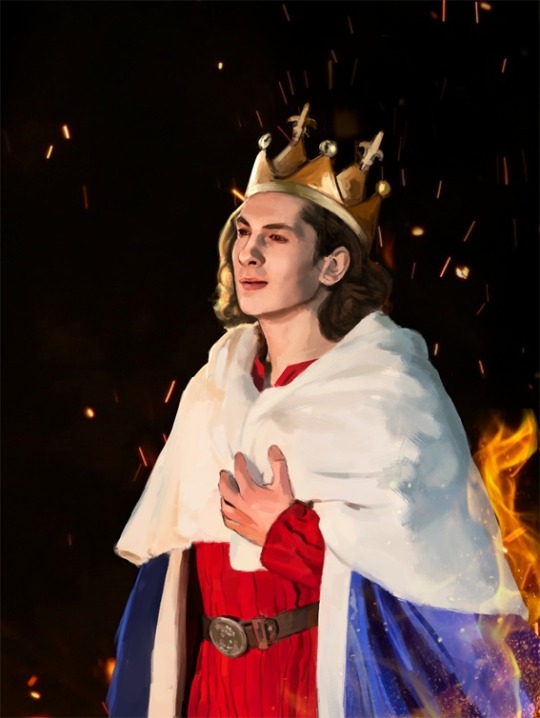
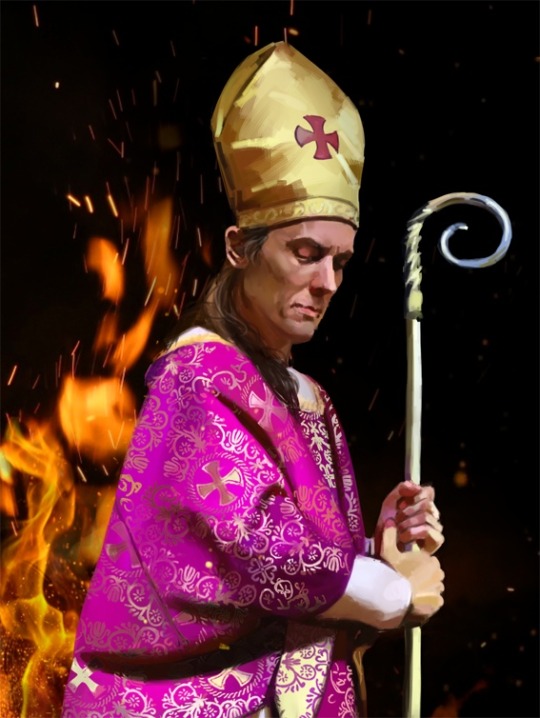
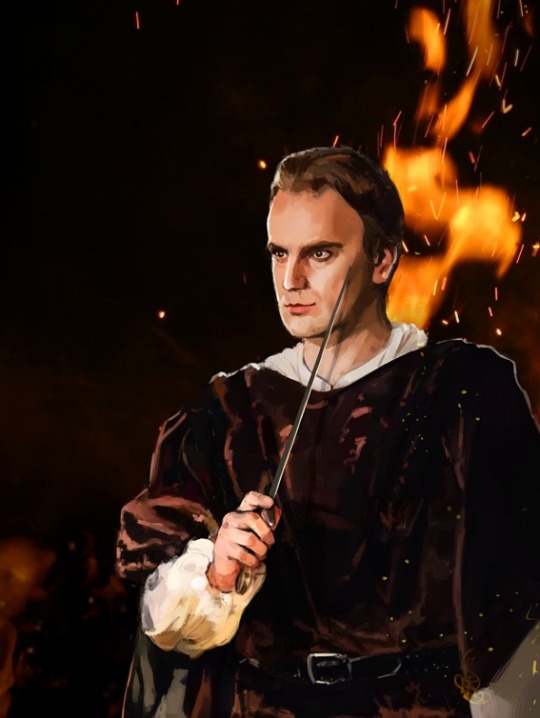
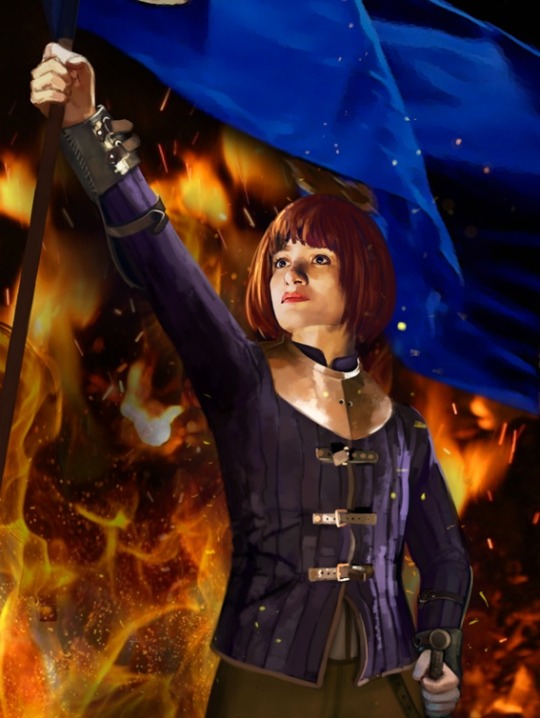
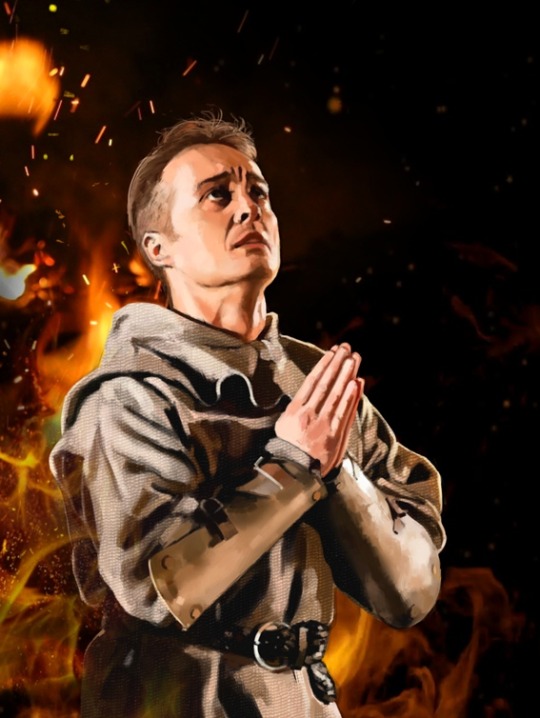
Playbill for the rock opera Jeanne d'Arc where I currently singing in a choir
#rock opera#playbill#moscow theater#jeanne d'arc#joan of arc#my art#pierre cauchon#Charles VII le Victorieux#gilles de rais#jean de dunois#charles vii#guerre de cent ans#hundred years' war
13 notes
·
View notes
Photo

Comte Jean de Dunois. Unknown artist. Château de Beauregard.
#royaume de france#maison de valois#maison d'orléans#valois orléans#jean d'orléans#comte de dunois#Château de Beauregard#la guerre de cent ans
2 notes
·
View notes
Text
Jean De Dunois
[Here]
Series: Puella Magi Tart Magica
Icons: 50
Please Like or Reblog if using!

1 note
·
View note
Photo



December miniatures (1455) taken from the Book of Hours of Simon de Varie by Master of Jean Rolin II (fl. from 1440 until 1465), Dunois Master (fl. from 1435 until 1466).
The first miniature shows Capricorn and the second a man slaughtering a pig.
Koninklijke Bibliotheek.
Wikimedia.
139 notes
·
View notes
Photo
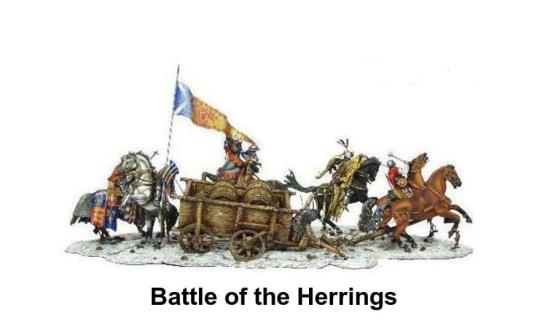



February 12th 1429 saw the Battle of thee Herrings, also called the Battle of Rouvray
Commanded by Sir John Fastolf, a convoy of as many as 300 wagons was carrying supplies for the English besiegers of Orleans when it was attacked near the town of Rouvray by the French and their Scottish allies.
Deploying his wagons as an improvised fortification, Fastolf fought off the enemy and eventually drove them from the field. The battle owes its unusual name to the fact that the supplies being carried by the convoy included not just cannonballs, arrows and crossbow bolts but also a large number of barrels of herrings – particularly important as Lent was approaching, a time when the soldiers would have been forbidden from eating meat.
Over eager to set to the Auld Enemty, the 400-strong Scottish infantry, contrary to the orders of the Count of Clermont went on the attack against the English formation. This,forced the premature ending of the artillery bombardment for fear of striking their own forces. The Scots were not well protected by armour and great damage was inflicted on them by the English archers and crossbowmen who were shooting from behind the protection of their wagon fort.
At this point, the English, seeing that the remaining French forces were slow to join the Scots in the attack decided to go on a counterattack. They struck the rear and flanks of the disorganised French/Scottish forces and put them to flight. According to contemporary accounts the French/Scots army lost about 400 men including Sir John Stewart. Among the wounded was Jean de Dunois, known also as Bastard of Orléans, who barely escaped with his life and who would later play such a crucial role, along with Joan of Arc, in the lifting of the siege of Orléans and the French Loire campaign which followed.
The pics include illustrations of the battle and coat of arms of John Stewart, featuring the Fleur-de-Lis, he was buried in the Sainte-Croix Cathedral, Orléans.Some sources give the 13th as the date of the battle.
Some sources give the 13th as the date of the battle.
8 notes
·
View notes
Text

Me finding an excuse to draw Jeanie baby cuddling his comrades 😏🥰
Don't repost, only reblog
#ikemen vampire#cybird#ikemen series#cybird ikemen#ikevam#ikevamp#otome#otome game#ikemen#cybird otome#ikevam jeanne#ikevam jean#ikevamp jean#ikemen vampire jean#ikemen jean#ikemen gilles#ikevam gilles#ikevamp gilles#gilles de rais#dunois#ikevam dunois#ikevamp Dunois#ikemen vampire pierre#ikemen pierre#ikevamp pierre#d'Alençon#ikevamp d'Alençon#ikevam d'Alençon#ikevam oc#ikevamp oc
257 notes
·
View notes